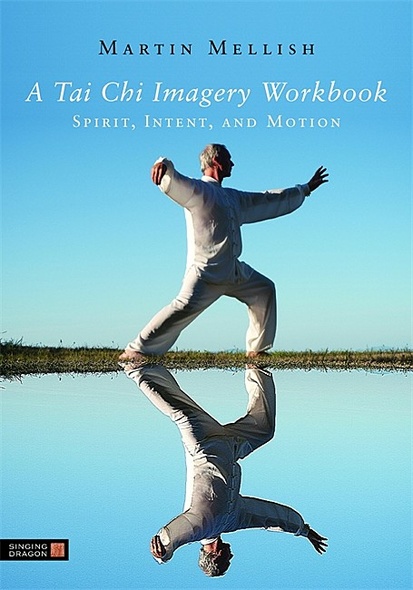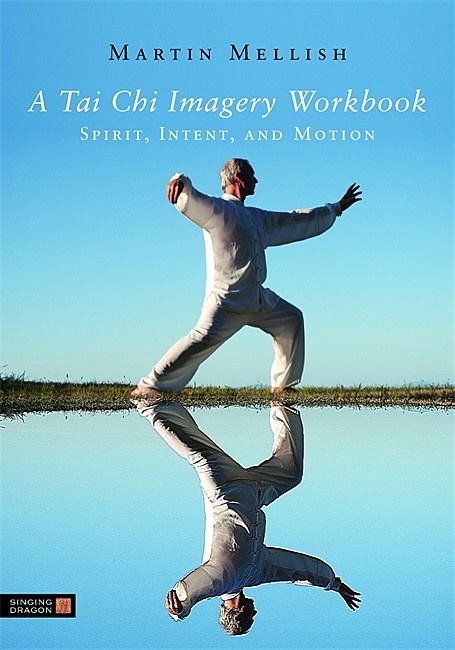
A Tai Chi Imagery Workbook
Spirit, Intent, and Motion
This innovative book makes the benefits of Tai Chi directlyavailable to Westerners by communicating its essence in poetic,evocative, and humorous images that apply not only to movementpractices of all kinds but to daily life. The book does not assume anyknowledge of Tai Chi forms.
The images in this book – drawn from a wide variety of sources,both Chinese and Western, ancient and modern – are easy tounderstand, fun to work with, and embody the true inner spirit of TaiChi's timeless tradition. The book contains hundreds of photos andline drawings illustrating the images, detailed explanations of thebiomechanical realities that underlie the images, and a summary of thelatest scientific research on the benefits of Tai Chi.Acknowledgements. Photo Credits. Introduction. Letting Go. A Key toRelaxation: Commitment. Letting Go of Muscular Tension. Power ThroughLetting Go. Letting Go of 'Doing'. Letting Go of Thought.Letting Go of Limitation. Stance, Rooting, and Stepping. The Importanceof Balance. Using Imagery for Balance. The 'Empty Step'. TheIliopsoas Muscle Complex and its Role in Stepping. Transferring YourWeight. Feet Like an Ape's Feet that can Hold on to Branches.Riding a Horse. Stance Like a Mountain. Your Body is just the Tip ofthe Iceberg. Your Reflection is Underneath the Ground. Lines ofMagnetic Force. Stance is an Arch. Sitting on an Exercise Ball. Stancelike a Car Suspension System. Being Carried in a Sedan Chair. Doing theForm Under a Low Ceiling. Skating. The Pelvis Opens and Closes Like aBook. The Center. Life, Emotion, Power, and Breath. Sinking theConsciousness into the Center. The Eye of the Storm. Pelvic Floor likea Trampoline. Psoas and Iliopsoas. Sitting in a Chair. ClimbingHarness. Hydraulic Jacks Lift Your Ribcage Off Your Hipbones. Trappinga Sheet of Paper in the Crease of the Hip. Sweeping Beer Bottles off aTable. The Trim of the Pelvis. Hipbones Resting in one HorizontalTrack. Hipbones like Headlamps. Feel the Pelvis as a Large Cup with aHandle. Pelvis like a Bowl of Fruit. Circuits Around the Center. TheProcess of Developing Awareness of your Center. Your Spine and YourLine. Anatomy and Musculature of the Spine. The Jade Pillow –Gateway Between Mind and Body. The Golden Cord. Sitting on aWindow-ledge. Feel the Spine like a Snake. The Pin of a Vertical Hinge.A Downward-pointing Spear. A Golf Ball Resting on a Tee. FeatherExtends Upward from Back of Head to Paint the Sky. You have a DinosaurTail. As if Balancing a Book on your Head. One Line Through Back ofHead, Tailbone, and Heel of Support Foot. Three Circles in the Torso.Radiance. The Inner Smile. Breathing into Every Cell in your Body.Bursting with Energy like the Michelin Man. An Aura Surrounds YourBody. Like Watering a Flower. Light Shining out from all your EnergyCentres. Lights Shining out to and Beyond the Horizon. Shoulders, Arms,and Hands. Relaxing the Arms. Relaxing the Shoulders. EnergeticOpenness. Connection. Flow and Rhythm. Rhythm. Flow. Combating EvilSpirits. Dancing with the Spirits. The Five Elements. Power. MechanicalDisadvantage and how we get Around it. Static Power. Bracing of theSmall of the Back. Dynamic Power. Wave Energy. Explosive Power. Selfand Other: Push Hands. Notes on Word Choices. Push Hands is forEveryone. Intention, Relationship, and Push Hands. Push Hands'Light'. Push Hands as a Formal Practice. Effectiveness ofImagery for Push Hands. Some Basic Images for Push Hands'Light'. Stick, Connect, Absorb, and Displace. Imagery forLevel 1: Sticking. Imagery for Level 2: Connecting. Imagery for Level3: Absorbing. Imagery for Level 4: Displacing. Tai Chi Straight Swordand Other Weapons. Tip of Weapon Passes through a Tiny Hole withoutTouching the Sides. Tip of the Sword is 'Sucked' out intoSpace. The Sword is an Extension of your own Body. Dissecting the Airas if it were Solid. Slicing a Pillow. Imagine your Empty Hand asAnother Sword. The Overhead Chop - Like Unrolling a Red Carpet - orlike an Ice Skater going into a Spin. Imagery in Daily Life. AppendixA: Mathematics and Mechanics of Tai Chi. Open Curves and MechanicalAdvantage. Gravity, the Ground Force, and the Balance of Forces.Elastic and Inelastic Collisions. Appendix B: Scientific Research onTai Chi. Confounding Effects in Tai Chi Research. Research Reviews bySubject. How to Research the Research. Bibliography. The Tai ChiClassics. Imagery and Movement. Imagery and the Mind. The FiveElements.





